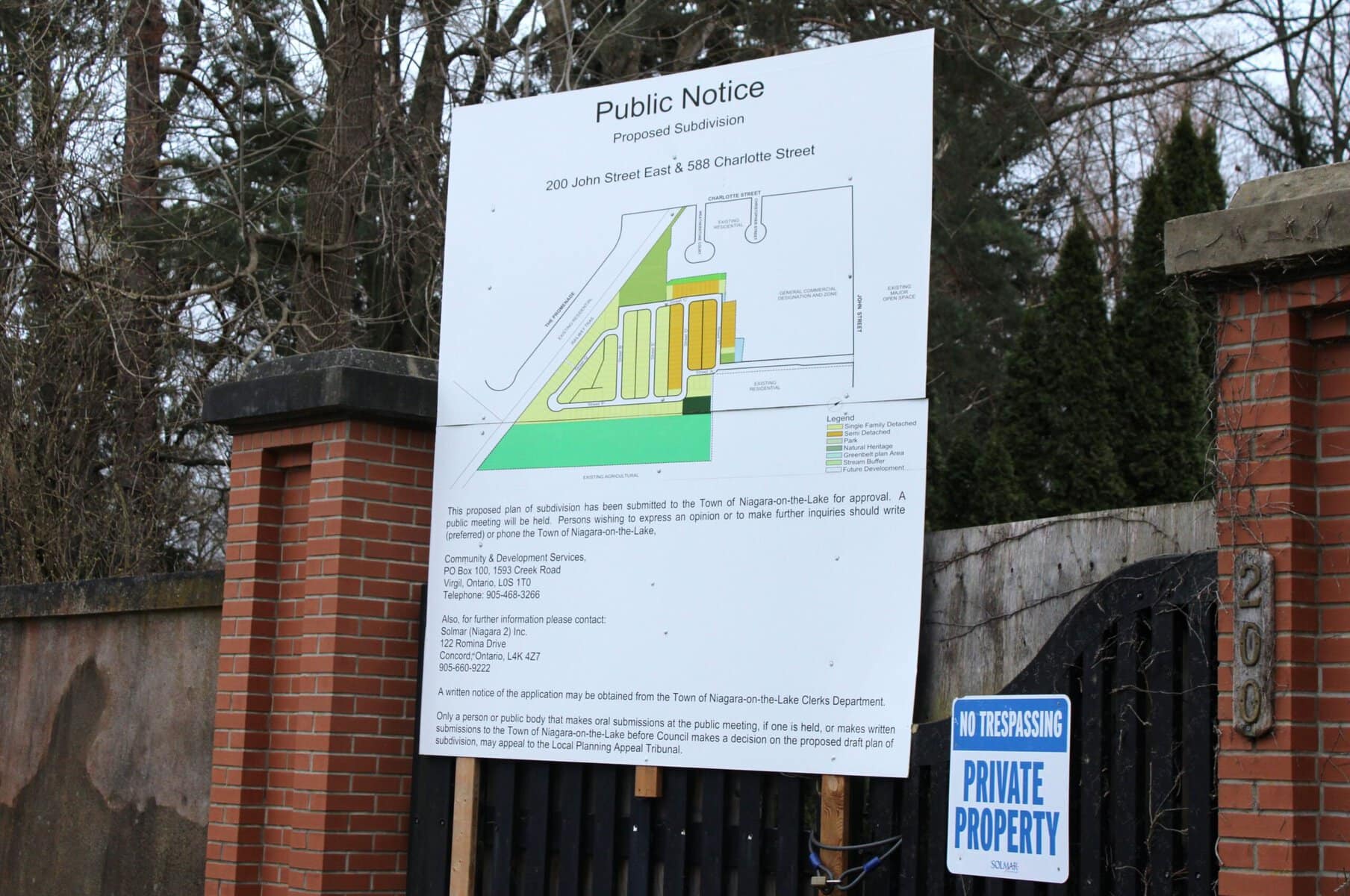An expert planner championing Solmar’s Rand Estate subdivision proposal was cross-examined at the ongoing provincial tribunal hearings that will decide if the project gets the green light.
Solmar, owned by developer Benny Marotta, plans to fill the back half of the historic estate with 196 homes.
The proposal has received immense pushback from Niagara-on-the-Lake residents.
SGL planner Paul Lowes, who has been retained by Solmar, spent most of Wednesday and Thursday last week testifying in favour of the project.
Lowes said the Solmar plan makes more efficient use than an alternative plan proposed by the resident advocacy group Save Our Rand Estate (SORE).
SORE wants the subdivision capped at 112 homes.
Compared to Solmar’s plan, which allots 19 per cent of the land for open space, SORE’s plan provides closer to 42 per cent, before accounting for greenbelt and natural wetlands on the property, Lowes said.
“In my opinion, the amount of open space on the SORE plan is not required.”
“It’s not an efficient use of land or creating compact development,” Lowes added.
In her cross-examination of Lowes, town Lawyer Nancy Smith pressed him on the issue of heritage preservation.
Smith presented evidence that Leah Wallace, a heritage planner retained by Solmar, told former town councillor Clare Cameron at a meeting on July 24, 2021, her job was to mitigate the impacts of the proposed subdivision on the heritage assets in the estate.
“When I did my (heritage impact assessment) I was given the subdivision plan and I had to work with what I got,” Smith said, quoting Wallace from a transcript of the meeting.
Smith said heritage assets appear to have been treated as a lower priority by the Solmar planning team.
For example, Solmar plans to move the historic carriage house on the Rand Estate to make room for houses, rather than maintaining it where it now stands.
“I’m going to suggest to you that Solmar’s focus started with the plan of subdivision and you mitigated what got in the way,” Smith said.
Lowes insisted this was not the case.
“It wasn’t like we created a plan and ignored what Miss Wallace told us,” Lowes said.
Wallace was not asked to write her heritage recommendations around the subdivision plan, he said.
For example, if Wallace had recommended the carriage house be left where it is, the planners would have done so, Lowes said.
In her cross-examination of Lowes, SORE lawyer Catherine Lyons brought up Solmar’s plans for sewer infrastructure.
Solmar wants to use pumping stations to help move raw sewage uphill toward the main sewage line on Charlotte Street.
Originally, the planning team was going to connect the subdivision and a proposed hotel next door to the same sewage line.
This would have allowed for a gravitational sewer instead, which is cheaper to maintain.
The hotel was proposed by Two Sisters Resorts Corp., also owned by Marrotta, but the application has been withdrawn and it is unclear if it will be built.
Lowes said the idea for a shared sewer line was scrapped when the engineer who proposed it learned the future subdivision would be owned by a condo corporation and have private infrastructure.
This is a problem, because Ontario building codes require the two owners have separate sewage lines, he said.
“Who made the decision that it would be developed by way of condo?” Lyons asked.
Lowes said it was the owner.
Lyons has been publicly critical of the claim that the subdivision land and hotel land make it difficult to share services, like access roads and sewer lines.
The hearings are ongoing.










